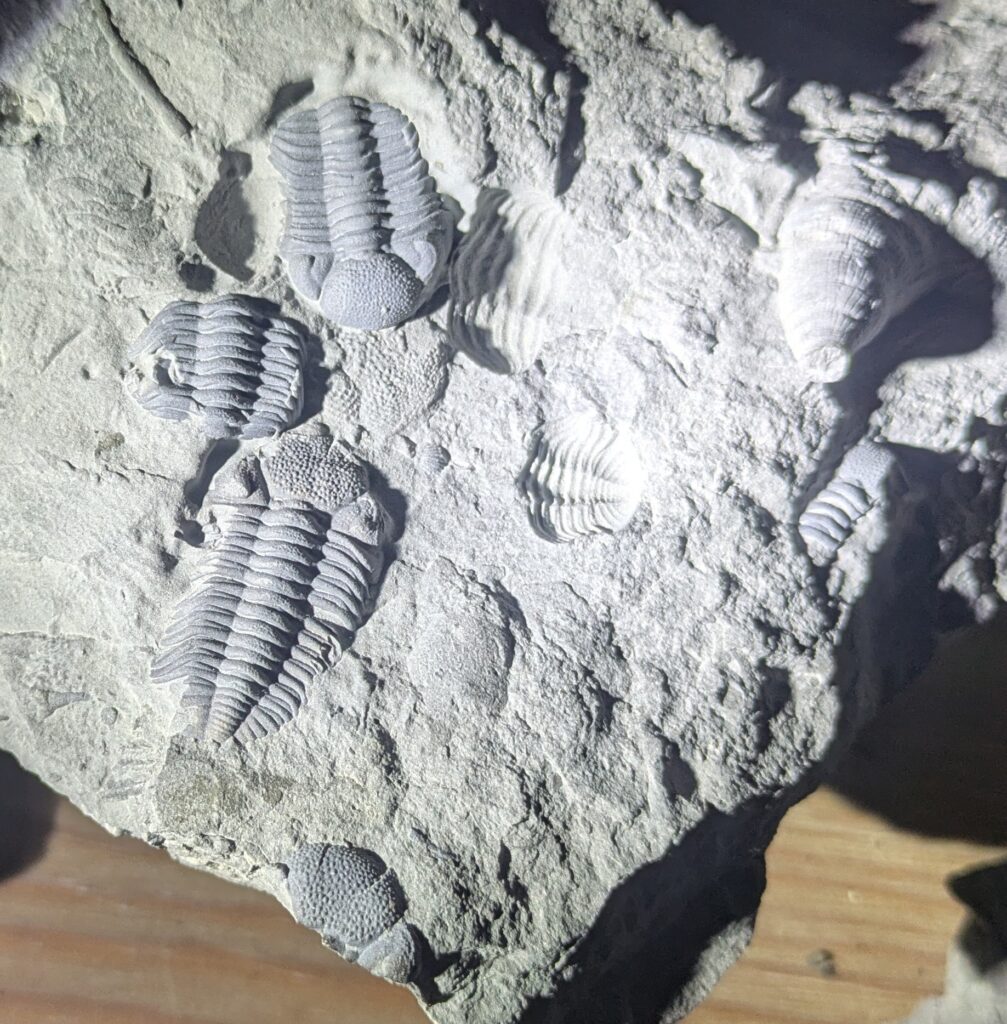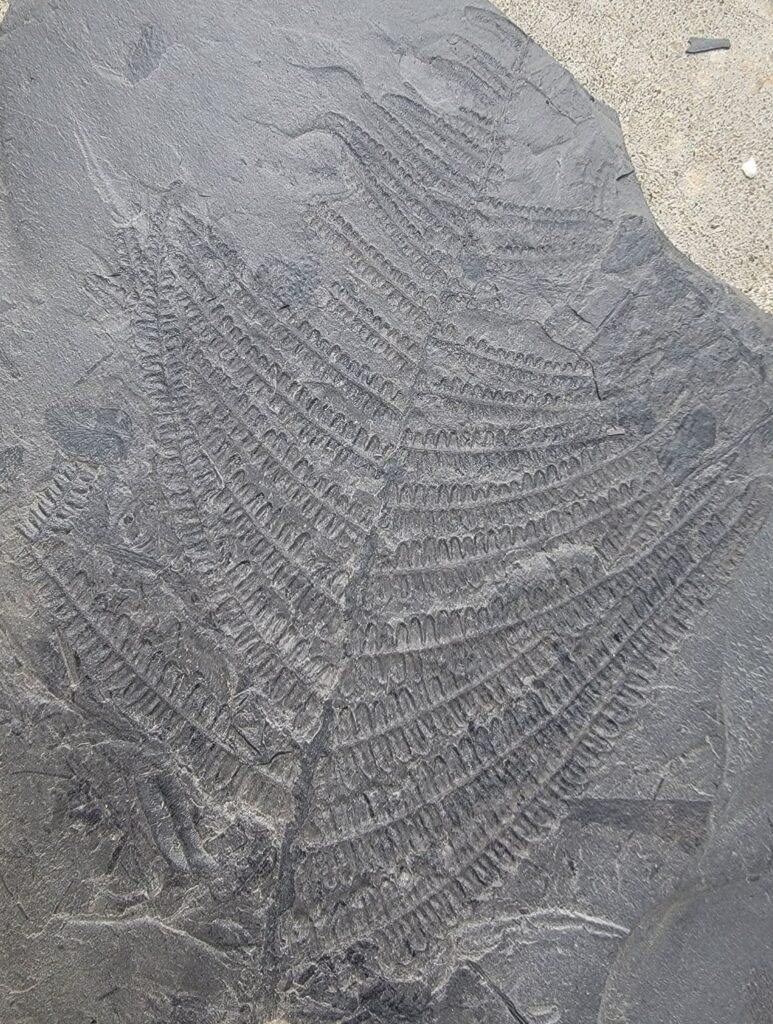Shale: A Sedimentary Window into Earth’s Past
Shale is one of the most abundant sedimentary rocks on Earth, covering vast swaths of the planet’s surface and holding the keys to understanding ancient environments. This fine-grained rock forms in quiet water environments, such as lakes, river deltas, and deep marine basins. Its unique properties make it a treasure trove for geologists, paleontologists, and fossil enthusiasts alike.
What is Shale?
Shale is a fine-grained sedimentary rock composed mainly of compacted clay minerals, silt, and tiny fragments of other minerals like quartz and calcite. Its hallmark feature is its fissility, meaning it splits easily into thin, parallel layers. This characteristic makes shale easy to work with and also contributes to its ability to preserve delicate fossils.
How Shale Forms
- Sediment Deposition:
- Shale forms in calm environments where fine sediments settle out of suspension. These include lake bottoms, floodplains, and deep-sea floors.
- Compaction:
- Over time, layers of fine sediments are buried and compacted under pressure, gradually transforming into shale.
- Cementation:
- The minerals within the sediments act as a natural “glue,” cementing the particles together.
Fossils in Shale
Shale is a remarkable fossil-preserving rock. The low-energy environments in which it forms are ideal for protecting delicate organisms from destruction by strong currents or scavengers.
Why Shale is Great for Fossils
- Fine-Grained Texture:
- The fine particles in shale create an excellent medium for capturing and preserving detailed impressions of fossils.
- Rapid Burial:
- Organic material is often rapidly buried by sediment in calm environments, reducing decay and scavenging.
- Anoxic Conditions:
- Low oxygen levels in many shale-forming environments slow down decomposition, increasing the likelihood of fossil preservation.
Types of Fossils Found in Shale
1. Plant Fossils
Shale is particularly famous for preserving ancient plant material. Fossilized leaves, stems, roots, and even entire forests can be found embedded in its layers.
- Coal-Bearing Shales:
- Some shales are associated with coal seams and often contain fossils of ancient ferns, horsetails, and seed ferns from the Carboniferous period.
- Impressions and Carbon Films:
- Plant fossils are commonly preserved as impressions or thin carbon films, capturing intricate details like vein patterns and leaf structures.
2. Marine Fossils
Shale formed in marine environments can contain an array of invertebrates and microfossils:
- Trilobites: Common in Cambrian and Ordovician shales.
- Brachiopods: Found in layers of marine shale.
- Bivalves and Gastropods: Abundant in younger marine shales.
- Ammonites: Often preserved in marine shales from the Jurassic and Cretaceous periods.
3. Vertebrate Fossils
- Some shales, such as the famous Green River Formation, have yielded exquisitely preserved fish fossils, often showing fine details like scales and fins.
- Fossil amphibians and early reptiles have also been found in shale, particularly in ancient freshwater deposits.
4. Microfossils
- Shales are rich in microscopic fossils such as pollen, spores, and foraminifera, providing critical information about ancient climates and ecosystems.
Shale and Plant Fossil Treasures
One of the most significant contributions of shale to paleontology is its preservation of ancient plant life. These fossils offer a glimpse into Earth’s vegetation through time, from the primitive forests of the Devonian period to the lush coal-forming swamps of the Carboniferous.
Famous Plant Fossil Locations
- Mazon Creek Shale (Illinois, USA):
- Known for its exceptional preservation of ferns, horsetails, and seed ferns.
- Petrified Forest National Park (Arizona, USA):
- Shale layers here contain plant material from ancient tropical forests.
- Joggins Fossil Cliffs (Nova Scotia, Canada):
- This UNESCO World Heritage site preserves upright fossilized trees embedded in shale.
Modern Uses of Shale
Beyond its value in paleontology, shale has practical applications in industry:
- Oil and Natural Gas:
- Shale is a significant source rock for hydrocarbons, particularly in formations like the Marcellus Shale in the United States.
- Ceramics and Construction:
- Shale is used to make bricks, tiles, and cement.
- Soil Amendment:
- Crushed shale improves soil drainage and aeration.
Challenges of Working with Shale
While shale is invaluable for fossil preservation, its fine layers can make it fragile and prone to splitting. Collecting fossils from shale requires careful handling to avoid damaging delicate specimens.
Conclusion
Shale is more than just a sedimentary rock—it’s a window into Earth’s ancient past. Its ability to preserve fossils, particularly plants and delicate organisms, makes it a cornerstone of paleontological study. Whether revealing the intricate patterns of ancient ferns or showcasing entire ecosystems, shale continues to inspire awe and discovery among scientists and fossil enthusiasts alike.


